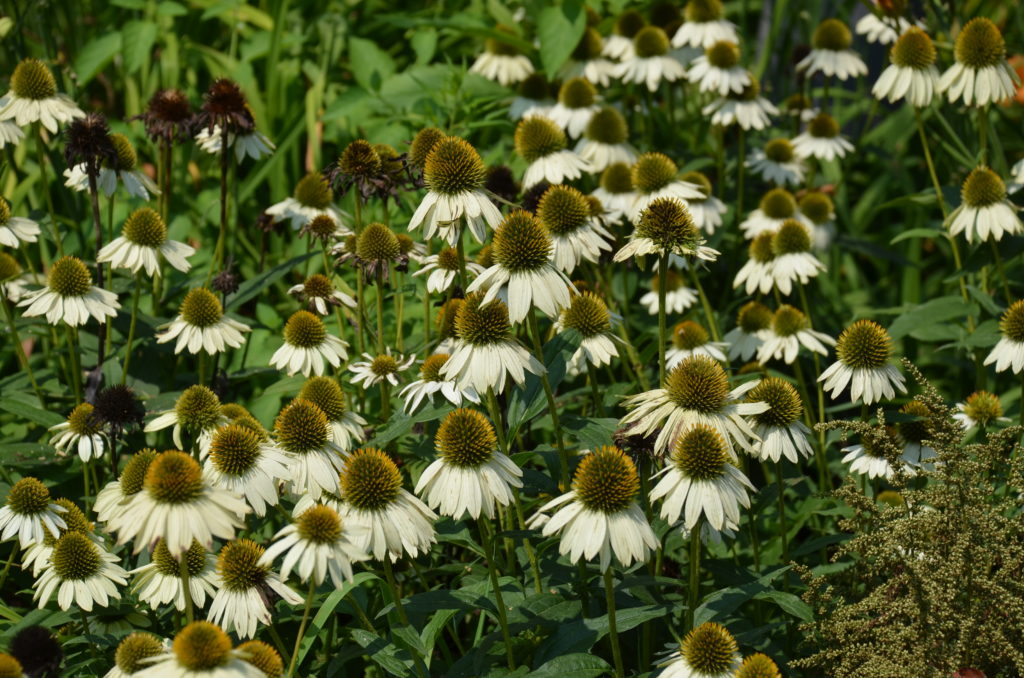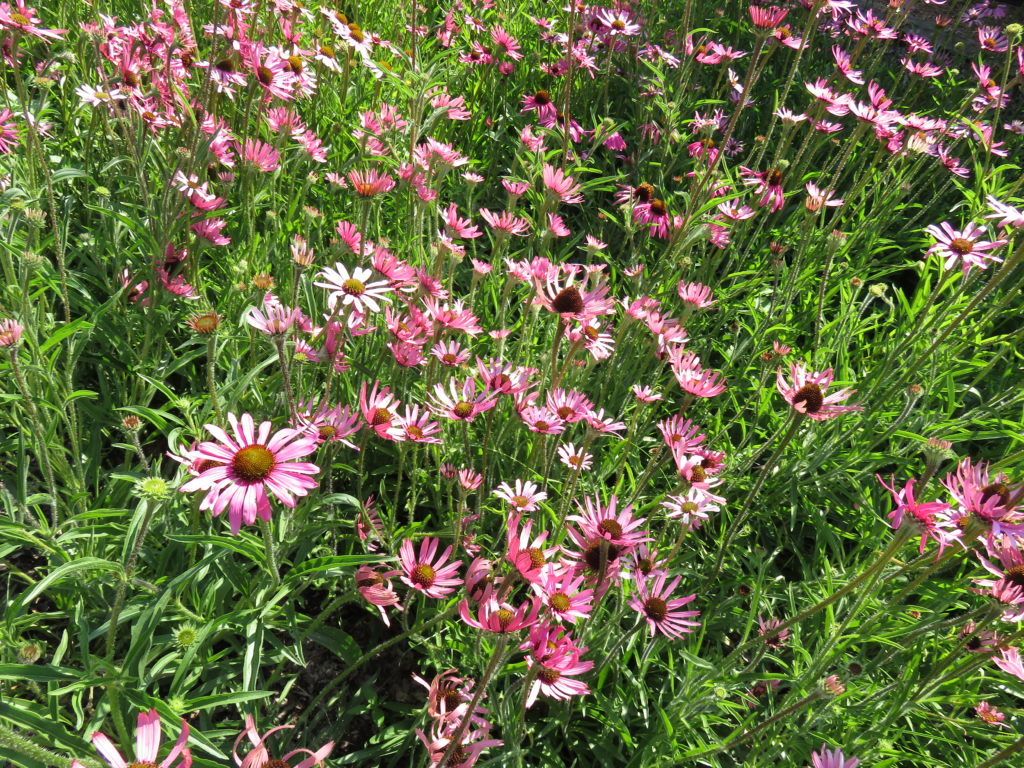
No question, coneflowers have changed greatly over the past quarter century. Varieties are now available in many color shades and plants demonstrate improved longevity. Current cultivars grow alot shorter. However, some hybrid forms have been disappointing, barely surviving 1-2 years.
When choosing coneflowers, Purple Coneflower (Echinacea purpurea) is my #1 favorite for dependability (USDA hardiness zones 3-8). The species is native to most of the Eastern and Midwestern U.S. They bloom in July, August, and into September, their nectar-filled flowers attract butterflies and bees, and their winter seed heads provide food for birds and other critters.
Yellow Coneflower (Echinacea paradoxa) is native to the Ozark region in Missouri and Arkansas. The yellow blooming E. paradoxa have been bred with E. purpurea. Flowering starts in June, and puts on a long show even as the petals fade. This species has a small geographic range due to habitat loss.
Pale Purple Coneflower (Echinacea pallida) are native from the central U.S. Petals tend to be long, narrow, and droopy along with washed out lavender color. Leaves and stems are particularly fuzzy. They bloom from June to July and grow in most U.S. gardens under proper care.
Tennessee Coneflower (Echinacea tennesseensis) are native the state, but their habitat has been in decline over the past half century. Only recently has it been removed from the endangered species list. It is a mid-summer bloomer and grows 2 to 2 ½ feet tall.
Coneflowers perform best in full sun and within a low to moderate range of soil fertility. While good soil drainage and watering during prolonged dry spells are good practice. Keep in mind that most coneflowers establish deep taproots and resent constant irrigation and over-feeding. To insure their winter survival, coneflowers are best planted before July 1st.


 Posted in
Posted in 
